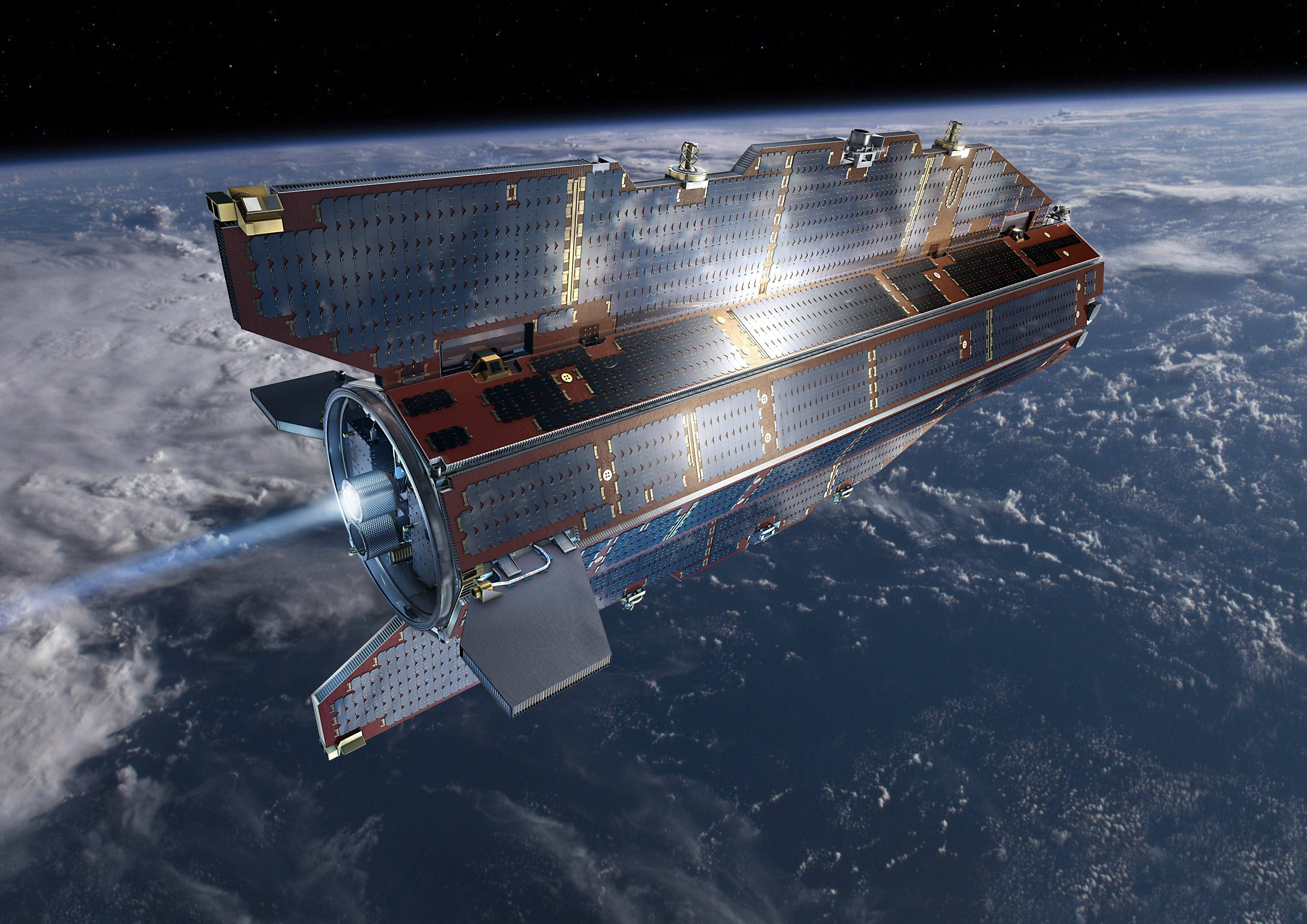GOCE – ESA’s Gravity Explorer
18 June 2008
Did you know that your weight is slightly different, depending on where you live? This is because the pull of Earth’s gravity varies from place to place. Precisely how much gravity differs is now being measured by ESA’s Gravity field and steady-state Ocean Circulation Explorer (GOCE) satellite.
Launched in March 2009, GOCE is the first of ESA’s Earth Explorer missions. Its task is to provide the best information yet on the planet’s 'gravity field'.
Gravity is the force that holds us all on the Earth. Without it, everyone (and everything) that wasn’t tied down would float away into space. However, the Earth’s gravitational pull varies from place to place. This is partly because the planet is not perfectly round – it is slightly flattened at the poles. Gravity is also affected by high mountains, deep ocean trenches, and the thickness and density of rock layers.
Measuring tiny variations in the pull of gravity is very difficult, especially from space. In order to detect the strongest possible gravity signal, GOCE follows a low orbit, 255 km above the Earth. As it passes over regions of stronger and weaker gravitational pull, the spacecraft bobs up and down, and its instruments report these changes along its path.
The arrow-shaped GOCE is also ultra-stable, with none of the moving parts often seen on other spacecraft. An advanced attitude control system ensures that its gravity measurements are not influenced by any movement of the satellite.
Why does precise measurement of gravity matter? Data from GOCE are being used to study ocean currents, changing sea level, land surface height and the depth of mountain roots. It also has numerous practical applications, for example, in the construction industry.






